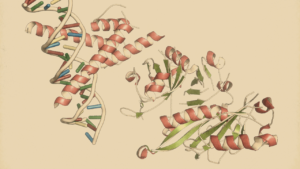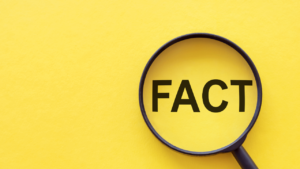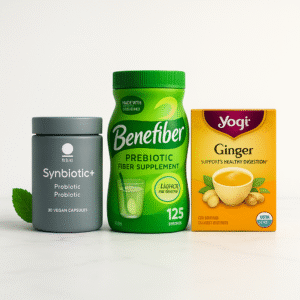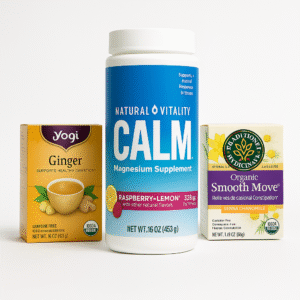Alleviate Lower Back Pain with the Top 8 Massage Balls
If you suffer from lower back pain, you may have heard of massage balls as a way to relieve your discomfort.
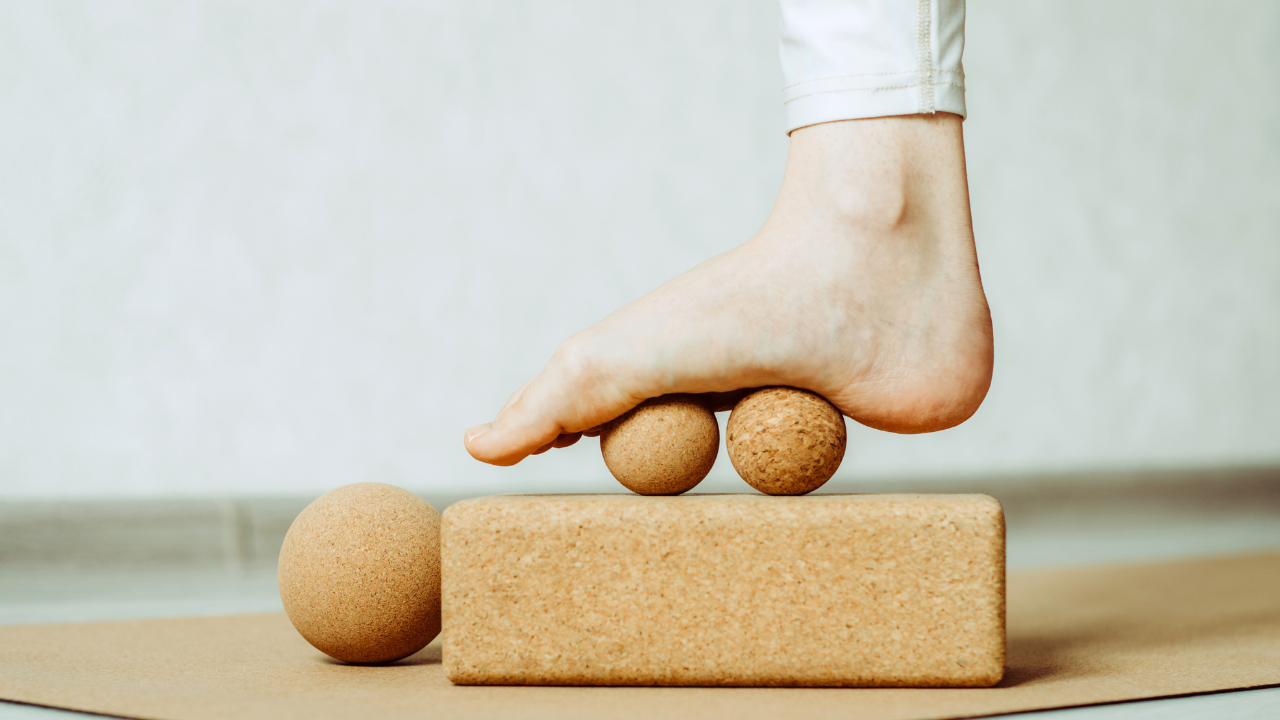
If you suffer from lower back pain, you may have heard of massage balls as a way to relieve your discomfort ✅✅.
Massage balls are small, round objects that you can use to apply pressure and massage your muscles and fascia. They can help you release tension, improve blood circulation, and reduce inflammation ✅✅ in your lower back.
But not all massage balls are created equal. Some are more effective, durable, and eco-friendly than others. In this blog post, we will review some of the best massage balls available on the market and how to choose the right one for your needs. We will also show you how to use a massage ball properly and what risks to be aware of.
Factors to Consider When Choosing a Massage Ball
When choosing a massage ball for your lower back pain relief, there are some factors that you should consider:
Size and Firmness
Massage balls come in different sizes, ranging from small (1.5 inches) to large (5 inches). The size you choose will depend on the area of the body you want to target.
Larger massage balls are ideal for larger muscle groups such as the back, while smaller ones are suitable for smaller areas such as the feet.
Firmness levels also vary, softer balls are generally better for more sensitive areas, while firmer balls are better for deep tissue massage.
Material
Massage balls can be made of different materials, such as rubber, silicone, cork, or foam. Some materials are more durable than others, so it's important to choose a ball that will last.
Softer balls are generally better for more sensitive areas, while firmer balls are better for deep tissue massage.
Texture
The texture of the ball can also affect its effectiveness. Some balls have spikes or knobs that can provide deeper tissue massage ✅, while others have a smoother surface.
Shape
Massage balls can be round, oblong, or shaped like a peanut. The shape you choose will depend on the area of the body you want to target.
How to Use a Massage Ball Properly
To use a massage ball properly, follow these steps:
- Place the ball on the floor and lie down on your back.
- Position the ball under your lower back.
- Roll the ball up and down your lower back, applying pressure as needed.
- Repeat on both sides of your spine.
To maximize the benefits of using massage balls, follow these tips:
✔️Choose a massage ball that suits your needs and preferences. There are different types of massage balls available, such as EVA foam, rubber, cork, or tennis balls.
✔️Drink plenty of water before and after using the massage balls to stay hydrated.
Drinking plenty of water after using the massage ball can help flush out any toxins or waste products that may have been released from your muscles during the massage ✅. This can also prevent dehydration and muscle cramps ✅.
✔️Warm up before using the massage balls. Use the massage ball in combination with other self-care techniques such as stretching and foam rolling.
This can also prevent injuries and increase blood flow to the area.
✔️The duration of a massage varies depending on the area being targeted and the desired outcome. If the goal is to promote lymphatic drainage, the massage will last from 30 to 40 minutes ✅.
When applied to a specific region, the massage typically lasts from 5 to 20 minutes. However, if the massage is intended to relax muscles and reduce emotional tension throughout the entire body, it will last from 45 to 90 minutes ✅.
✔️Consult with a healthcare professional if you have any underlying medical conditions that may be affected by self-massage.
What are the Best Massage Balls Available on the Market?
There are many types and brands of massage balls on the market, but not all of them offer the same quality and benefits. Here are some of the best massage balls that we recommend for lower back pain relief:
4KOR Massage Balls
✔️Best feature: Deep tissue massage
✔️Made from 100% recyclable thermoplastic elastomer (TPE)
- Size: Medium
- Texture: Grippy
- Material: EVA foam
- Shape: Round
- Firmness: Firm

Gaiam Restore Hot and Cold Therapy Kit
✔️Best feature: Temperature therapy
- Size: Various (kit contains multiple items)
- Texture: Smooth (cold therapy ball), spikes (hot therapy ball)
- Material: Rubber
- Shape: Round
- Firmness: Hard (cold therapy ball), Soft (hot therapy ball) ✅

TriggerPoint Foam Massage Ball
✔️Best feature: High-density foam for targeted pressure
Made from recyclable materials
Compact and portable design
- Size: Medium
- Texture: Grippy
- Material: EVA foam
- Shape: Round
- Firmness: Semi-firm

Gaiam Restore Massage Ball
✔️Best feature: Textured surface for enhanced grip
✔️Made from eco-friendly rubber
- Size: Medium
- Texture: Textured
- Material: Foam
- Shape: Round
- Firmness: Semi-firm

Blackroll Mini Foam Roller Ball
✔️Best feature: Double-ball design for effective muscle release
✔️Made from environmentally friendly, high-quality EPP foam
✔️Lightweight and compact design
- Size: Medium
- Texture: Smooth
- Material: Foam
- Shape: Double-round (two connected spheres)
- Firmness: Semi-firm

Aquanimous Cork Massage Balls
✔️Best feature: Eco-friendly material (cork)
- Size: Medium
- Texture: Smooth
- Material: Cork
- Shape: Round
- Firmness: Firm

Acupoint Physical Massage Therapy Lacrosse Ball
✔️Best feature: Versatile use for various muscle groups
- Size: Small
- Texture: Smooth
- Material: High-grade rubber
- Shape: Round
- Firmness: Firm

RAD Roller Ball
✔️Best feature: Compact size and portability
- Size: Medium
- Texture: Textured, smooth
- Material: Medical-grade silicone
- Shape: Round
- Firmness: Semi-firm

Risks Associated with Using a Massage Ball
A massage ball is generally safe and beneficial for most people, but there are some risks or precautions that you should be aware of before using it.
Potential Risks or Precautions
❌Avoid using a massage ball if you have any injuries, infections, inflammation, or skin conditions in the area that you want to massage. This can worsen your condition or cause complications ✅.
❌Avoid using a massage ball on areas that are sensitive or delicate, such as your spine, neck ✅, face, or genitals. This can cause damage to your nerves, bones, organs, or tissues.
❌Avoid using a massage ball if you are pregnant, have a pacemaker, have blood clots, have osteoporosis, or have any other medical condition that may affect your circulation or bone density. Consult your doctor before using a massage ball if you are unsure about your health status.
❌Stop using the massage ball immediately if you experience any severe pain, discomfort, numbness, tingling, swelling, bruising, or bleeding during or after the massage. Seek medical attention if these symptoms persist or worsen.
Guidelines for Safe and Responsible Use of Massage Balls
Use a massage ball only as directed and intended. Do not use it for any other purpose than massaging your muscles.
Use clean and dry massage balls every time. Wash and dry your massage ball after each use to prevent bacteria growth and infection.
Store your massage balls in a cool and dry place away from direct sunlight and heat sources. This can prevent damage to the material and quality of the ball.
Replace your massage ball regularly if it shows signs of wear and tear, such as cracks, holes, dents, or stains. This can prevent injury and infection from using a defective or contaminated ball.
Do Massage Balls Really Work?
If you suffer from lower back pain, you may have heard of massage balls as a possible solution. Massage balls are small, round objects that you can use to apply pressure to specific points on your body, such as your lower back, hips, or glutes.
They are designed to mimic the effects of a massage therapist's hands, fingers, or elbows, and to release tension and tightness in your muscles and fascia.
There is not a lot of scientific evidence or studies that directly measure the effectiveness of massage balls in relieving lower back pain. However, there are some indirect benefits that massage balls may provide, such as:
✔️Managing pain and alleviating feelings of anxiety and depression in adult cancer patients ✅✅.
✔️Increasing blood flow and oxygen to the affected area, which may promote healing and reduce inflammation ✅✅.
✔️Stimulating the nervous system and activating the body's natural painkillers, such as endorphins and serotonin ✅.
✔️Improving range of motion and flexibility by breaking up adhesions and scar tissue in the muscles and fascia ✅✅.
✔️Reducing stress and anxiety by creating a relaxing and soothing sensation ✅✅.
Massage balls may work for some people, but not for others. It depends on the cause and severity of your lower back pain, as well as your personal preference and comfort level.
What Size Massage Ball Should I Get?
If you decide to try massage balls for your lower back pain, you may wonder what size massage ball you should get.
The size of the massage ball you choose will depend on the area of the body you want to target.
For the lower back, a larger ball (3-5 inches) is recommended.
The smaller the massage ball, the more intense and precise the pressure will be. Smaller massage balls are good for targeting specific trigger points or knots in your muscles, but they may also cause more discomfort or pain if you are not used to them.
The larger the massage ball, the more diffuse and gentle the pressure will be. Larger massage balls are good for covering larger areas of your body, such as your entire lower back or glutes, but they may also be less effective in reaching deeper layers of your muscles or fascia.
The ideal size of massage ball for you may also depend on your body type and personal preference and what feels most comfortable for you.
Where Not to Use a Massage Ball
While massage balls can be very beneficial for many areas of the body, there are some situations where they may not be suitable or even harmful.
Here are some examples of where not to use a massage ball:
✔️On open wounds, bruises, or inflamed skin. This can cause further damage and infection to the affected area.
✔️Areas with blood clots or varicose veins. This can dislodge the clots and cause serious complications such as stroke or pulmonary embolism.
✔️Areas with tumors or cancerous growths. This can stimulate the growth and spread of the cancer cells.
✔️On areas with nerve damage or numbness. This can worsen the condition and cause more pain or loss of sensation.
✔️On areas with bone fractures or osteoporosis. This can cause more damage to the bones and increase the risk of fracture.
Are Vibrating Massage Balls Good?
Vibrating massage balls are a type of massage ball that has a built-in motor that creates vibrations when activated. These vibrations add another layer of stimulation to the massage, which can have some benefits and considerations.
Some of the benefits of using vibrating massage balls are:
✔️Increase blood circulation and oxygen delivery to the muscles, which can help with recovery and healing.
✔️Enhance the relaxation and pain relief effects of the massage, as the vibrations can soothe the nervous system and release endorphins.
✔️Reach deeper layers of muscle tissue and fascia, which can help with breaking up knots and adhesions.
✔️Provide more variety and customization to the massage, as you can adjust the intensity and frequency of the vibrations according to your preference.
Some of the considerations for using vibrating massage balls are:
✔️More expensive than regular massage balls, as they require batteries or charging.
✔️Louder than regular massage balls, which can be distracting or annoying for some people.
✔️Less durable than regular massage balls, as they have more moving parts that can break or malfunction.
✔️Less portable than regular massage balls, as they are heavier and bulkier.
If you are interested in trying vibrating massage balls, there are some products that offer this feature, such as:
✔Sedona Vibrating Massage Ball, a soft silicone exterior with a tread to help massage the muscles
✔Hyperice Hypersphere Mini is a compact and powerful vibrating massage ball that has three-speed settings and a rechargeable battery.
✔TRATAC ActiveBall is a high-intensity fitness vibrating ball for enhanced recovery and pain relief.
✔TriggerPoint MB Vibe Massage Ball, which is a soft and textured vibrating massage ball that has a one-button control and a cordless design.
Conclusion
When choosing a massage ball, it's important to consider factors such as size, firmness, material, and shape. By using a massage ball regularly and responsibly, you can experience the benefits of lower back pain relief and improved overall well-being.
Eco-friendly massage balls made of natural rubber, silicone, or sustainable cork are a great choice for those who want to be environmentally conscious while also improving their health. These materials are durable, long-lasting, and gentle on the skin.
We encourage readers to make an informed decision when choosing a massage ball. Consider your individual needs and preferences, consult with a healthcare professional if necessary, and choose a high-quality, eco-friendly product that will provide the best results for you.
Frequently Asked Questions
Can massage balls be eco-friendly?
How do massage balls help with back pain?
Are there any risks associated with using massage balls for back pain?
What are massage balls?
References
Fitnature uses only high-quality sources, including peer-reviewed studies, to support the facts within our articles. Read our editorial process to learn more about how we fact-check and keep our content accurate, reliable, and trustworthy.
- Bessa, Vicente Alberto Lima, and Maria Fátima de Sousa Bessa. “Massotherapy with Balls: History and Application Technique.” Revista Científica Multidisciplinar Núcleo Do Conhecimento, vol. 02, no. 10, Oct. 2019, pp. 05–15, https://doi.org/10.32749/nucleodoconhecimento.com.br/health/massotherapy-with-balls.
- Buttagat, Vitsarut, et al. “Therapeutic Effects of Traditional Thai Massage on Pain, Muscle Tension and Anxiety in Patients with Scapulocostal Syndrome: A Randomized Single-Blinded Pilot Study – PubMed.” Journal of Bodywork and Movement Therapies, vol. 16, no. 1, Jan. 2012, https://doi.org/10.1016/j.jbmt.2011.04.005.
- Büyükyılmaz, Funda, and Türkinaz Aştı. “The Effect of Relaxation Techniques and Back Massage on Pain and Anxiety in Turkish Total Hip or Knee Arthroplasty Patients – PubMed.” Pain Management Nursing : Official Journal of the American Society of Pain Management Nurses, vol. 14, no. 3, Sept. 2013, https://doi.org/10.1016/j.pmn.2010.11.001.
- Cheong, Hyun Suk, et al. “Spinal Cord Injury Incurred by Neck Massage.” Annals of Rehabilitation Medicine, vol. 36, no. 5, Oct. 2012, pp. 708–12, https://doi.org/10.5535/arm.2012.36.5.708.
- Clay, James H., and David M. Pounds. Massoterapia Clínica: Integrando Anatomia e Tratamento. 2003.
- Crosman, L. J., et al. “The Effects of Massage to the Hamstring Muscle Group on Range of Motion – PubMed.” The Journal of Orthopaedic and Sports Physical Therapy, vol. 6, no. 3, Jan. 1984, https://doi.org/10.2519/jospt.1984.6.3.168.
- Eisenach. “Textbook of Pain, 4th Edition.” Anesthesiology, vol. 94, no. 5, May 2001, pp. 942–942, https://doi.org/10.1097/00000542-200105000-00052.
- Grissinger, Matthew. “Improved Safety Needed in Handling Elastomeric Reservoir Balls Used for Pain Relief.” P & T : A Peer-Reviewed Journal for Formulary Management, vol. 38, no. 5, May 2013, pp. 243–45.
- Kim, Yushin, et al. “A Soft Massage Tool Is Advantageous for Compressing Deep Soft Tissue with Low Muscle Tension: Therapeutic Evidence for Self-Myofascial Release – PubMed.” Complementary Therapies in Medicine, vol. 43, Apr. 2019, https://doi.org/10.1016/j.ctim.2019.01.001.
- Lau, Wing Yin, et al. “Water Intake after Dehydration Makes Muscles More Susceptible to Cramp but Electrolytes Reverse That Effect.” BMJ Open Sport — Exercise Medicine, vol. 5, no. 1, Jan. 2019, https://doi.org/10.1136/bmjsem-2018-000478.
- Lee, Sook-Hyun, et al. “Meta-Analysis of Massage Therapy on Cancer Pain – PubMed.” Integrative Cancer Therapies, vol. 14, no. 4, July 2015, https://doi.org/10.1177/1534735415572885.
- Lei, Houyong Zhong, Cuimei Wang, Zhen Wan, Jinpei. The Possible Mechanisms of Massage Therapy. Accessed 16 May 2023.
- Lund, Iréne. “Massage as a Pain Relieving Method.” Physiotherapy, vol. 86, no. 12, Dec. 2000, pp. 638–54, https://doi.org/10.1016/S0031-9406(05)61300-4.
- Miladinia, Mojtaba, et al. “Massage Therapy in Patients With Cancer Pain: A Review on Palliative Care.” Jundishapur Journal of Chronic Disease Care, vol. 6, no. 1, Jan. 2017, https://doi.org/10.17795/jjcdc-37356.
- —. “Massage Therapy in Patients With Cancer Pain: A Review on Palliative Care.” Jundishapur Journal of Chronic Disease Care, vol. 6, no. 1, Jan. 2017, https://doi.org/10.17795/jjcdc-37356.
- Morelli, M., et al. “H-Reflex Modulation during Manual Muscle Massage of Human Triceps Surae – PubMed.” Archives of Physical Medicine and Rehabilitation, vol. 72, no. 11, Oct. 1991, https://doi.org/10.1016/0003-9993(91)90011-7.
- Munk, Niki, et al. “Noninvasively Measuring the Hemodynamic Effects of Massage on Skeletal Muscle: A Novel Hybrid near-Infrared Diffuse Optical Instrument – PubMed.” Journal of Bodywork and Movement Therapies, vol. 16, no. 1, Jan. 2012, https://doi.org/10.1016/j.jbmt.2011.01.018.
- Nordschow, and Bierman. “The Influence of Manual Massage on Muscle Relaxation: Effect on Trunk Flexion*.” Physical Therapy, vol. 42, no. 10, Oct. 1962, pp. 653–57, https://doi.org/10.1093/ptj/42.10.653.
- Pérez-Idárraga, Alexandra, and Luis Fernando Aragón-Vargas. “Postexercise Rehydration: Potassium-Rich Drinks versus Water and a Sports Drink – PubMed.” Applied Physiology, Nutrition, and Metabolism = Physiologie Appliquee, Nutrition et Metabolisme, vol. 39, no. 10, Oct. 2014, https://doi.org/10.1139/apnm-2013-0434.
- Supa’at, Izreen, et al. “Effects of Swedish Massage Therapy on Blood Pressure, Heart Rate, and Inflammatory Markers in Hypertensive Women.” Evidence-Based Complementary and Alternative Medicine : eCAM, vol. 2013, Jan. 2013, https://doi.org/10.1155/2013/171852.
- Waters-Banker, Christine, et al. “Investigating the Mechanisms of Massage Efficacy: The Role of Mechanical Immunomodulation.” Journal of Athletic Training, vol. 49, no. 2, Apr. 2014, https://doi.org/10.4085/1062-6050-49.2.25.
- Zuhrotunida, et al. “Literature Review: The Effectiveness of Endorphin Massage on Reducing Dysmenorrhea Pain in Young Women.” Jurnal Kesehatan Masa Depan, vol. 1, no. 2, Dec. 2022, pp. 109–23, https://doi.org/10.58516/jkmd.v1i2.37.
Review date not set.
How we reviewed this article:
Latest on:
